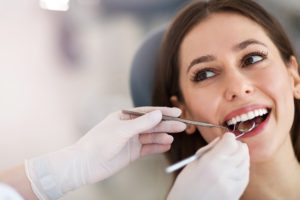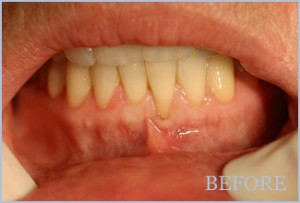Header logo
header top contact widget
Blog Archives
Recent Posts
Categories
Archives
- September 2024
- August 2024
- July 2024
- June 2024
- May 2024
- April 2024
- March 2024
- February 2024
- January 2024
- December 2023
- November 2023
- October 2023
- September 2023
- August 2023
- July 2023
- June 2023
- May 2023
- April 2023
- March 2023
- February 2023
- January 2023
- December 2022
- November 2022
- October 2022
- September 2022
- August 2022
- July 2022
- June 2022
- May 2022
- April 2022
- March 2022
- February 2022
- January 2022
- December 2021
- November 2021
- October 2021
- September 2021
- August 2021
- July 2021
- June 2021
- May 2021
- April 2021
- March 2021
- February 2021
- January 2021
- December 2020
- November 2020
- October 2020
- September 2020
- August 2020
- July 2020
- June 2020
- May 2020
- April 2020
- March 2020
- February 2020
- January 2020
- December 2019
- November 2019
- October 2019
- September 2019
- August 2019
- July 2019
- June 2019
- May 2019
- April 2019
- March 2019
- February 2019
- January 2019
- December 2018
- November 2018
- October 2018
- September 2018
- August 2018
- July 2018
- June 2018
- May 2018
- April 2018
- March 2018
- February 2018
- January 2018
- December 2017
- November 2017
- October 2017
- September 2017
- August 2017
- July 2017
- June 2017
- May 2017
- April 2017
- March 2017
- February 2017
- January 2017
- December 2016
- November 2016
- October 2016
- September 2016
- August 2016
- July 2016
- June 2016
- May 2016
- April 2016
- March 2016
- February 2016
- January 2016
- December 2015
- November 2015
- October 2015
- September 2015
- August 2015
- July 2015
- June 2015
- May 2015
- April 2015
- March 2015
- February 2015
- January 2015
- December 2014
- November 2014
- October 2014
- September 2014
- August 2014
- July 2014
- June 2014
- May 2014
- April 2014
- March 2014
- February 2014
- January 2014
- December 2013
- November 2013
- October 2013
- September 2013
- August 2013
- July 2013
- June 2013
- May 2013
- April 2013
- March 2013
- February 2013
- January 2013
- December 2012
- November 2012
- October 2012
- September 2012
- August 2012
- July 2012
- June 2012
Dental Implants Overcome The Problems Of Missing Teeth.
Posted on Jan 28, 2019 by William J. Claiborne, DDS MS
Advanced periodontal (gum) disease is the number one cause of adult tooth loss in the U.S., affecting nearly 48 percent of American adults. Although teeth play an important role in our overall health, there is a misconception with some adults that tooth loss is a natural part of the aging process.
Hopefully, this is changing.
In 1957-58, it was estimated that over 55 percent of adults over the age of 65 were totally edentulous (having no natural teeth). In 1971, a survey by the National Center For Health Statistics found that the percentage had dropped to 45. By the year 2024, it is estimated that only 10 percent of Americans between ages 65 – 74 will be without teeth.
Teeth are more than just what you use to smile, bite, and chew. They play an important role below the gumline as well.
Tooth roots provide nourishment and stimulation to the upper or lower jaw bone. This helps the bone to maintain its mass. Without tooth roots, the jaw bone begins to shrink in a process known as resorption. Dentures wearers often notice first signs of this when their once-snug ‘appliance’ begins to move or slip when chewing.
Here’s why that is occurring…
A denture, when first made, is designed to conform to the unique contours of an existing ‘ridge.’ This is the gum-covered arches in your mouth where natural teeth were once held. Without the stimulation of tooth roots to the bone, resorption causes the ridge to gradually flatten. As it loses height, the denture becomes “slippery” or “wobbly,” as patients often describe.
When dentures slip and rub sore spots on tender gums, denture wearers quickly learn which foods are too challenging for their unstable denture. They may use denture pastes or adhesives more frequently. Eventually, many switch to a diet of soft foods that dissolve easily in the mouth.
When a diet is deficient in the fiber and nutritional components of a healthy makeup, overall health suffers. Because the act of chewing and acids in saliva flow are the first stage of digestion, denture wearers are known to take more medications and have more gastro-intestinal problems than those who still have natural teeth.
Also at risk is social involvement, now shown to be an important part of being healthy. Because of fear of embarrassment, it’s fairly common for longtime denture wearers to avoid these gatherings, especially those centered around food. (And, try to think of many social activities that don’t – at some point – include food!)
One survey of over 20,000 dentists (by the Academy of General Dentistry) showed that having a tooth removed causes many patients to feel socially embarrassed and less likely to participate in functions that are psychologically beneficial.
Psychological issues related to tooth loss are also associated with feelings of depression and being less goal-oriented in the workplace.
The decline of bone mass can even be seen, contributing to changes in facial appearance. As bone height declines, deep wrinkles form around the mouth. Even when smiling, the corners of the mouth turn downward. Jowls form as facial muscles detach. The chin becomes pointed and the mouth appears to be collapsed into the face (often described as a ‘granny look’).
To see the extent of bone loss, a denture wearer should look in the mirror without the denture in place. Because a denture ‘plumps up’ the face, it can be deceiving as to just how much bone loss has been experienced.
For those who have already experienced tooth loss, I highly recommend dental implants for replacement. There are many types of implant systems, each designed to accommodate specific needs. A Periodontist, a dental specialist, has advanced training in the diagnosis and placement of all types of implants. The type that is best for you depends on many factors that a periodontal specialist takes into consideration.
There are even implant types that can be successful for people who have already experienced a great deal of resorption. In many cases, bone rebuilding procedures can restore the height of the jaw bone with a bone graft not needed,.
Dental implants restore the look, feel and function of natural teeth while boosting one’s ability to feel confident and eat comfortably. Another bonus? Dental implants do not rely on adjacent teeth for support as with partial dentures or crown-&-bridge combinations.
The implanted portion is held by the jaw bone, just as the natural tooth roots you once had. This helps to halt the process of bone loss. Dental implants are also designed to last a lifetime, making them a wise investment.
For those who feel they are “too old” for dental implants, I remind them that many of our implant patients are well into their 80’s or 90’s. Keep in mind that today’s adults are staying in the workplace longer, staying active in senior years, and living longer.
Since 1950, Americans added over 11 years to average life expectancy, to over age 79, according to 2013 statistics. Although females were once living an average of seven years longer than males, that gap has now narrowed to less than five.
When an adult, at any age, expresses frustration with feeling they are caught in a dental office’s revolving door, an examination typically reveals that they have some level of periodontal (gum) disease. Like most diseases that form in our bodies, gum disease begins silently. When symptoms do emerge, they include tender gums that bleed when brushing, persistent bad breath, and gums that pull away from teeth (known as gum recession).
Amazingly, so many adults have gum disease even though it is completely avoidable. Proper brushing and flossing, minimizing sugar intake, avoiding smoking, and having regular dental checkups can help curtail the cycle of dental problems.
First, you must establish a healthy foundation, which begins with healthy gums. The first step is to have a periodontal exam to determine your current gum condition. If signs of gum disease exists, we will explain the process needed to restore your gums to a healthy state. We will also make home care recommendations to help you maintain good gum health between dental checkups.
While adults are getting better at keeping their natural teeth, we still have a long way to go. I believe many adults would be more determined to keep their natural teeth if they had a better understanding of their value. Hopefully, this has helped your appreciation of what supports those pearly whites!
For more information, contact us at 828-274-9440 or tap here to being.
http://www.cdc.gov/nchs/products/databriefs/db197.htm
How Our Asheville Periodontal Dental Office Makes Your Care Comfortable, Easy.
Posted on Jan 20, 2019 by William J. Claiborne, DDS MS
When people understand what a periodontist does, they realize the advantages of having this specialized treatment when it comes to the health and appearance of a smile.
A Periodontist has advanced training and skills in all stages of periodontal (gum) disease as well as in the re-contouring gum tissues. Additionally, they offer unique skills in the diagnosis and placement of all types of dental implants. (Learn more at the web site of the American Academy of Periodontology: http://perio.org/consumer/what-is-a-periodontist)
However, in any dental office, whether specialty or general, there must be a commitment to the individual needs of each patient.
In our Asheville office, this is where people who have periodontal (gum) disease properly diagnosed and successfully treated. This begins with early-stage gingivitis and through the advanced level of periodontitis. And, our advanced technology optimizes diagnosis and treatment, enhancing comfort and saving treatment time.
Research has shown that your oral health is a vital component of overall health. Studies continually uncover intricate interactions that oral bacteria of advanced periodontal disease has with other processes in the body.
For example, that the health of your gums and number of teeth directly correspond to a healthier you. Don’t delay care that you need, even if fear has prevented this in the past. For example, an article published by Johns Hopkins Medicine stated, “Diabetes that is not properly controlled can lead to periodontal (gum) diseases in both young and old people.”
There is a flip side of this. They go on to share, “… if diabetes is poorly controlled, higher glucose levels in the mouth fluids will encourage the growth of bacteria that can cause gum disease.” (https://www.hopkinsmedicine.org/healthlibrary/conditions/diabetes/diabetes_and_periodontal_gum_disease_85,P00349)
An unfortunate obstacle for many to receive regular dental care, however, has been fear or anxiety associated with dental visits.
According to findings of a study that included over 18,000 people (reported in Dental Products Report), “61 percent of the respondents said they’re suffering from dental fear, and almost 4 percent of them said they’ve never been to a dentist. The biggest percentage of people (39 percent) are afraid of the pain, followed by the smell of chemicals (24 percent) and the sound of the drill (21 percent).”
This is why adults often end up with gum disease and tooth loss. As a matter of fact, the Centers For Disease Control & Prevention (CDC) estimates that over 47 percent of American adults have some level of gum disease, which is the leading cause of adult tooth loss.
To help anxious or fearful patients relax, we make sure we are communicating thoroughly. Our belief is that patients who are fully informed of their needs and the procedures required are more confident in proceeding with treatment. This, in turn, creates a patient who is able to relax and let fears go.
Some patients are unable to relax, however. This is why our office provides Oral or I.V. Sedation. Oral sedation is a pill form of relaxation. Although most patients have little or no memory of the procedure afterwards, this provides deep relaxation with a quick recovery.
I.V. sedation (also known as ‘twilight sleep’) for a deeper level of relaxation. This medication is administered via a drip. Patients comfortably doze throughout their procedures are accomplished and generally have no memory of treatment afterwards. Although recovery time is longer with IV sedation, most are able to resume normally within 24 hours.
Regardless of the sedation chosen, patients are closely monitored by trained staff and advanced safety equipment. Your safety is as important to us as your comfort, so we ensure all measures are taken to provide both to optimal levels.
Sedation can be used for procedures involving gum reshaping, treatment of gum disease, or placement of dental implants. For any procedure, however, we carefully assess each patient’s current gum health, age, medical and dental history, medications, and number of remaining teeth.
Please know that your procedure, comfort option, and individual needs are important to every member on our team. Here, you’ll be respected, given exceptional care, and never over-treated or under-treated.
To begin, call 828-274-9440 to begin with a consultation appointment. During this time, we can discuss the options that may work best for your needs. I’ll explain comfort options and we can have our financial coordinator review payment options with you, if desired.
Think “E-Cigs” Are A Safe Alternative? Read On…
Posted on Jan 16, 2019 by William J. Claiborne, DDS MS
Smokeless cigarettes, or “e-cigs,” first appeared on the market in 2004. Since then, their popularity has exploded.

Dr. William Claiborne,
Biltmore Periodontics
Unlike tobacco cigarettes, where nicotine is inhaled through smoke, e-cigarettes are electronic devices that often mimic the shape of a small cigarette. They are designed to heat a liquid and produce an aerosol, or mix of small particles in the air. The inhalation process is known as vaping.
Because these battery-operated devices deliver nicotine without some of the toxic chemicals in tobacco cigarettes, they are deemed as safer alternatives. Although both cigarettes and e-cigs are vehicles that deliver addictive nicotine, vaping wins when it comes to being the lesser of the two evils.
However, the vapor from e-cigarettes does contain toxic compounds, just at much lower levels than cigarette smoke. This is good news for people who are quitting smoking and vaping instead.
That doesn’t mean e-cigs are SAFE, however. They’re just safer than traditional cigarettes.
A particular concern is the appeal, and hence rapid growth, among teen users.
E-cig vapor, once inhaled, is absorbed by the body. For teens, it may be particularly harmful to developing brains and bodies. The vapor contains a chemical mix of nicotine, formaldehyde and other chemicals. A recent study that examined urine and saliva specimens from teen participants showed e-cig users had elevated levels of harmful compounds such as acrylonitrile, acrolein, propylene oxide, and crotonaldehyde.
For those who both smoked cigarettes and vaped, they had the highest levels of toxins and carcinogens (when compared to e-cig only users and non-smokers). (http://pediatrics.aappublications.org/content/141/4/e20173557)
Flavorings such as diacetyl, a chemical linked to lung disease, are also a concern. (https://www.cdc.gov/tobacco/basic_information/e-cigarettes/Quick-Facts-on-the-Risks-of-E-cigarettes-for-Kids-Teens-and-Young-Adults.html)
And nicotine is nothing to take lightly as far as adolescent development goes. The Centers For Disease Control & Prevention warns that nicotine can harm the developing adolescent brain, which continues to develop until about age 25. Adolescence nicotine use can also harm the parts of the brain that control attention, learning, mood, and impulse control.
Using nicotine in adolescence may also increase risk for future addiction to other drugs.
With limited scientific evidence to develop public health policies, researchers are urging priority status be given to studying the effects of e-cigs aerosol mixtures on cells, tissues and the oral cavity (interior of the mouth). The problem has become such a concern that the National Institute of Dental & Craniofacial Research is studying the biological and physiological effects of their chemical components.
Rather than focusing on the effects of nicotine (those findings are well-known), this will examine how the high concentrations of aerosol mixes affect oral tissues. They will also monitor the tissues in the mouth, airway structures and lungs that absorb the vaporized chemicals in e-cigs. Hopefully, the findings will show the true effects of long-term exposure to these chemical mixtures.
Your smile is particularly vulnerable to e-cigs, just as it is to traditional cigarettes. Since oral tissues are moist by nature, the water vapor inhaled into the mouth is absorbed readily by gum tissues. Nicotine, consumed by any method, is known to have a drying effect on oral tissues. This decreases saliva that helps wash food particles and bacteria from the mouth.
Without sufficient saliva, bacteria rapidly reproduce, increasing the potential for tooth decay and gum disease. A dry mouth also leaves you fighting bad breath on a frequent basis.
Having a dry mouth can lead to a higher risk of periodontal (gum) disease. Initially, the condition causes the gums to become swollen, tender, red, and bleed easily when brushing. If not treated promptly, this early-stage of gum disease (known as gingivitis) can progress to periodontal disease.
In addition to attacking gum tissues and the bone that support teeth, gum disease can weaken gum tissues and allow entry of infectious bacteria into the bloodstream. Once bloodborne, the bacteria can cause inflammatory reactions elsewhere in the body. Research has shown it can increase one’s risk for heart disease, stroke, diabetes, arthritis, preterm births, impotency, and some cancers.
Additionally, nicotine from any source has been shown to constrict blood vessels in the mouth so much that it compromises the ability of oral tissues to heal. This is why we caution patients to stop (or greatly decrease) smoking after an extraction or dental implant placement.
Don’t allow misconceptions of e-cigs being “a safe alternative to smoking” to put the health of your smile at risk. Smoking, in any form, places your oral – and overall – health at a disadvantage. If you do smoke, be especially committed to your regular check-ups and cleanings so we can help you maintain a healthy mouth.
If you’ve noticed signs of gum disease, please know this will not go away on its own. Gum disease will progress and can lead to tooth loss when not treated sufficiently. A periodontist is a specialist and your wisest choice in overcoming all levels of gum disease, and getting your smile back on track! Call 828-274-9440 for an examination appointment in our Asheville periodontal office.
Reshaping Gums Can Protect & Beautify Your Smile.
Posted on Jan 08, 2019 by William J. Claiborne, DDS MS
As a periodontal specialist, I spend a great deal of my time treating patients who have periodontal (gum) disease and placing dental implants. My specialty has given me advanced training in both areas; both being important for the preservation of your smile and protection of your health.

Receded gum tissue
One aspect of the periodontal specialty that is not always familiar to the general public, however, is our ability to recontour gum tissues. While this can be done to enhance the appearance of a smile, reshaping the gum tissues is also performed to protect and even save natural teeth. I’ll explain.
For several reasons, gum tissues can pull away from the base of teeth. This can occur from gum tissues becoming drier with age or over-zealous tooth brushing. Gums can also loosen their grip around teeth when teeth tilt out of their proper positions.
When the tight seal around the base of teeth is compromised, the tooth becomes more vulnerable to oral bacteria. Darker, sensitive tooth root segments can be exposed. This not only causes discomfort, these areas are more susceptible to bacteria. And, because of allowing an entry point for oral bacteria, the tooth roots and bones that support teeth are more vulnerable to damage as well.
In cases when a tooth breaks near the gum line, gum re-contouring may be able to expose enough of the tooth structure so a crown can be placed. This means the natural tooth can be saved rather than require removal. Once a natural tooth is removed, it brings with it a long list of decisions and associated costs.
Although protecting and saving teeth is the priority, gum contouring can also be performed to enhance the appearance of a smile. For example, for people who have a “gummy smile,” too much gum tissue is visible above upper teeth in a full smile. A periodontist can use his or her specialized skills to reshape the tissues to provide a more balanced smile line.
This procedure is known as a Gingivectomy. This repositions or removes excess gum tissues so the smile line is more balanced to teeth. The procedure is performed while the patient is fully comfortable and the healing time is greatly reduced with our advanced technology.
Another procedure that greatly enhances the look of a smile is crown lengthening. This is recommended when the gum tissues that arch one or several teeth is at a different level than surrounding teeth. With this uneven alignment of gum tissue, it can create a jumbled look in spite of having attractive, healthy teeth.
A crown lengthening procedure typically combines the repositioning of gum tissues along with placement of a crown. This recreates a smile that has proper balance amongst teeth and gum tissues.
It’s not uncommon for new patients to arrive with misconceptions about the procedures. With advanced technology and techniques, along with specialized skills, our patients enjoy optimal comfort, minimal treatment time, and exceptional outcomes for every periodontal need.
Too, many patients feel these procedures are out of reach financially. For many treatments, we offer payment options that are manageable to most budgets. This way, you can make payments while enjoying the benefits of a healthy, beautiful smile.
Now that you know how a periodontist can enhance the health and appearance of your smile, consider scheduling a consultation and exam. Call 828-274-9440 or tap here to begin.


